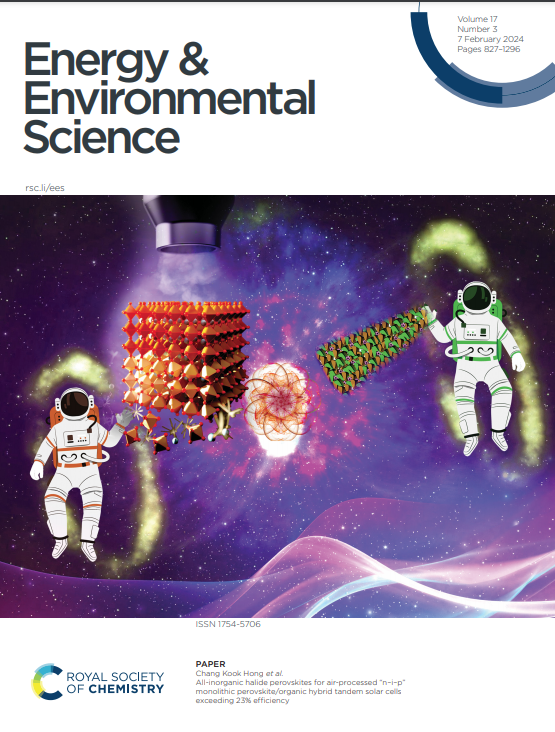通过电催化还原一氧化氮合成氨的路线图
IF 30.8
1区 材料科学
Q1 CHEMISTRY, MULTIDISCIPLINARY
引用次数: 0
摘要
使氨生产电气化需要完全由可再生能源提供动力的模块化系统,从而消除对化石来源的氢的依赖。这一观点认为,将空气的非热等离子体氧化转化为一氧化氮(NO)与五电子电催化NO-to- nh₃还原(NORR)相结合是一种有前途的、节能的和成本现实的途径。借鉴成熟电化学平台的经验教训,我们确定了关键的机制挑战和系统级差距,并将其转化为明确的技术经济约束约束下的有针对性的工程策略。我们的密度泛函理论分析揭示了基于硝酸盐的途径中一个隐藏的瓶颈:在8电子/ 9质子的脱氧和氢化级联中,亚硝酸盐的缓慢脱附,而NORR规避了这一瓶颈。为了达到工业相关的速率和选择性,我们量化了工程反应微环境,澄清了结合与解离途径,并强调了气供膜组件和流动气体扩散电极的作用。我们还解决了集成、耐用性和与横向扩展等离子体电解槽架构兼容的电解槽设计问题,并设定了与trl相关的性能目标。最后,综合技术经济模型表明,到2035年,NORR可以达到与Haber-Bosch电解氢供应的成本相当,到2050年,通过分布式、模块化部署,有可能占据全球氨市场的1-5%。本文章由计算机程序翻译,如有差异,请以英文原文为准。
A roadmap for ammonia synthesis via electrocatalytic reduction of nitric oxide
Electrifying ammonia production demands modular systems powered entirely by renewable energy, eliminating dependence on fossil-derived hydrogen. This perspective argues that coupling non-thermal plasma oxidation of air to nitric oxide (NO) with five-electron electrocatalytic NO-to-NH₃ reduction (NORR) is a promising, energy-efficient and cost-realistic pathway. Drawing on lessons from mature electrochemical platforms, we identify the key mechanistic challenges and system-level gaps and translate them into targeted engineering strategies bounded by explicit techno-economic constraints. Our density functional theory analysis reveals a hidden bottleneck in nitrate-based pathways: slow nitrite desorption in an eight-electron/nine-proton deoxygenation and hydrogenation cascade, which NORR circumvents. To achieve industrially relevant rates and selectivity, we quantify the engineered reaction microenvironment, clarify associative versus dissociative pathways, and emphasise the role of gas-fed membrane assemblies and flow-by gas-diffusion electrodes. We also address integration, durability, and electrolyser design compatible with scale-out plasma–electrolyser architectures and set performance targets linked to TRLs. Finally, integrated techno-economic modelling indicates that NORR can reach cost parity with Haber–Bosch supplied by electrolytic hydrogen by ~2035, with the potential to capture ~1–5% of the global ammonia market by 2050 via distributed, modular deployment.
求助全文
通过发布文献求助,成功后即可免费获取论文全文。
去求助
来源期刊

Energy & Environmental Science
化学-工程:化工
CiteScore
50.50
自引率
2.20%
发文量
349
审稿时长
2.2 months
期刊介绍:
Energy & Environmental Science, a peer-reviewed scientific journal, publishes original research and review articles covering interdisciplinary topics in the (bio)chemical and (bio)physical sciences, as well as chemical engineering disciplines. Published monthly by the Royal Society of Chemistry (RSC), a not-for-profit publisher, Energy & Environmental Science is recognized as a leading journal. It boasts an impressive impact factor of 8.500 as of 2009, ranking 8th among 140 journals in the category "Chemistry, Multidisciplinary," second among 71 journals in "Energy & Fuels," second among 128 journals in "Engineering, Chemical," and first among 181 scientific journals in "Environmental Sciences."
Energy & Environmental Science publishes various types of articles, including Research Papers (original scientific work), Review Articles, Perspectives, and Minireviews (feature review-type articles of broad interest), Communications (original scientific work of an urgent nature), Opinions (personal, often speculative viewpoints or hypotheses on current topics), and Analysis Articles (in-depth examination of energy-related issues).
 求助内容:
求助内容: 应助结果提醒方式:
应助结果提醒方式:


